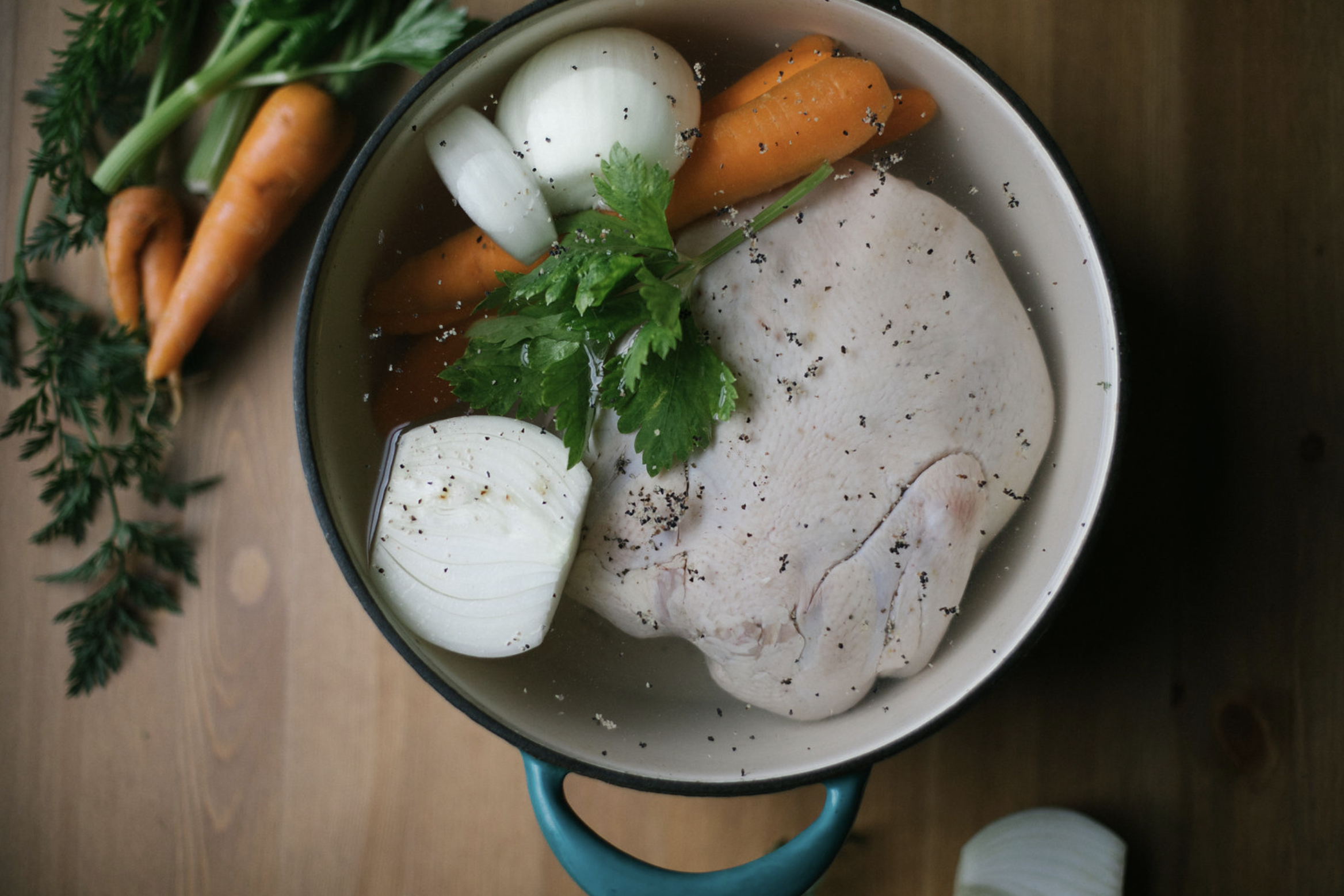Eat - Recipe

Bone Broth Recipe
After formula feeding my first child, we were surprised when our daughter Elizabeth was born and refused both bottle and pacifier. I began an exclusive breastfeeding relationship with her that I wasn’t prepared for. I was encouraged by those in public health that our bodies were designed to prepare this food–something I had never considered before. When it was time to start solids, knowing that breast milk was the best first food, we looked to locally, seasonally grown fruits and vegetables as the next best food thanks to support from the local health department and the WIC program.
Years later, when we discovered that Lilah had severe food sensitivities and leaky gut, an important part of her healing protocol was nourishing broth and real food. We now know that broth is the best next food for babies, and we’re sure to make sure that Sterling ate plenty when he began solids. It’s also the perfect nourishing food for anyone with illness, sensitivities or digestive upset.
At least a few times a year—and always in January—our family allows our tummies a break by following a diet rich in bone broth, healthy fats, and vegetables. The new year, followed by the busyness of the holiday season, makes for perfect timing.
Classic Bone Broth
- Whole chicken
- Onion
- Celery
- Carrot
- Salt and peppercorns
- 2 gallons filtered water (add more as needed)
Broth is a simple food requiring only what you have on hand and time. The base can be whole chickens, leftover bones, fish heads, chicken feet or any other leftover meat, bone or marrow from earlier cooking. Most often, I just take a whole chicken and combine it with onions and other vegetables we have available. Cover with water, bring to a boil and then allow to simmer for 12-24 hours. The chicken can be removed and used in other meals (we normally shred it for a nourishing chicken salad). Over time you will learn how you prefer your broth. Just get started!
Broth keeps for up to a week in the refrigerator and up to 6 months in the freezer. It’s perfect to drink daily or as needed for healing. It’s used in so many soups, stews and other recipes that it makes a great staple to keep on hand.

